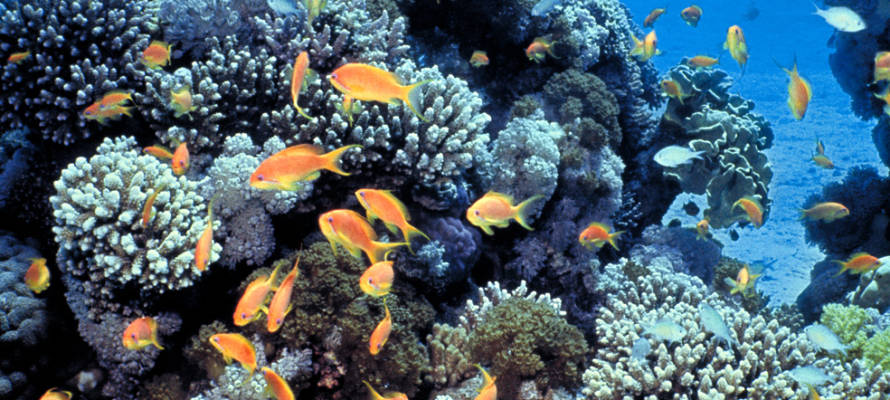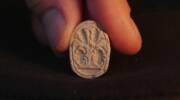The researchers created a laboratory simulation using seawater and ascidians, filter-feeding marine animals resembling small blobs that efficiently filter tiny particles from the water.
By Pesach Benson, TPS
The problem of microplastics plaguing marine ecosystems is worse than previously thought and even biodegradable plastics are causing harm, Israeli scientists warned on Wednesday.
Filter-feeding marine animals are not only consuming microplastic particles but also excreting them in feces that disguise the plastic as organic matter, a team of Tel Aviv University researchers reported.
This transformation allows the particles to infiltrate the marine food web undetected, spreading pollution and potentially carrying harmful pollutants and diseases to organisms throughout the ecosystem.
Microplastics are tiny plastic particles measuring less than five millimeters in diameter.
They can originate from a variety of sources, including the breakdown of larger plastic debris, microbeads in personal care products, and synthetic fibers shed during washing.
These particles often carry harmful pollutants, such as heavy metals and chemicals.
Due to their small size, they easily infiltrate marine environments, where they are ingested by a wide range of organisms, including fish, plankton and filter feeding animals such as mussels, clams, and certain types of fish.
A study recently published in the peer-reviewed journal Chemosphere sought to understand how microplastics change after passing through the digestive systems of marine organisms and how these changes influence their interactions with the environment and other organisms.
Conducted by PhD student Eden Harel, alongside Prof. Noa Shenkar and Prof. Ines Zucker, the researchers created a laboratory simulation using seawater and ascidians, filter-feeding marine animals resembling small blobs that efficiently filter tiny particles from the water.
The ascidians were exposed to two types of microplastic particles: conventional polystyrene (PS) and polylactic acid (PLA), a bioplastic marketed as environmentally friendly. The team analyzed the impact of the ascidians’ filtration process on these particles at various stages: initial exposure, post-filtration, and post-digestion.
The results showed that while the ascidians effectively removed PS particles from the water within two hours, these particles were excreted back into the water after 48 hours.
In contrast, PLA particles decreased in concentration, with larger particles breaking down into nano-sized fragments that became undetectable after digestion.
When the researchers analyzed the excreted microplastic particles using Raman spectroscopy, they found that the fecal coating altered the particles to the extent that they were no longer identifiable as plastic, instead appearing as organic matter.
“Since many marine animals feed on feces, they may well ingest plastic that has changed its properties, identifying it as food. In this way, they are also exposed to microplastics, and spread them further within the marine food web,” Harel explained.
The fecal coating also facilitates bacterial colonization and the adhesion of pollutants like heavy metals and antibiotics, further intensifying the ecological damage of microplastics, Harel added.
Bioplastic Particles: ‘Carriers of Pollutants’
“This phenomenon also affects bioplastics marketed as ‘biodegradable,’ Zucker stressed. “Unless conditions are met for their complete breakdown, they remain as particle pollution that changes properties during passage through the digestive system. The many transformations plastic particles undergo in the environment — from weathering to digestive processes, as investigated in this study — turn them into carriers of pollutants and diseases within the food web.”
Biodegradable plastics are designed to break down more easily than traditional petroleum-based plastics.
The study also raised a red flag for the potential of algal blooms stemming from the particles in the feces. Algal bloom is a rapid and excessive growth of algae in a body of water.
While some algal blooms are harmless, others produce toxins or deplete oxygen levels in the water, creating “dead zones” where aquatic life struggles to survive.
The scientists explained that normally, feces sink slowly through the water column, serving as a food source for many organisms.
However, the findings showed that found feces containing microplastics sinks rapidly to the seafloor, leading to localized accumulations of feces and plastic particles.
This, in turn raises the carbon and nitrogen levels of the seafloor, a phenomenon that triggers algal blooms, the study warned.
Do You Love Israel? Make a Donation - Show Your Support!
Donate to vital charities that help protect Israeli citizens and inspire millions around the world to support Israel too!
Now more than ever, Israel needs your help to fight and win the war -- including on the battlefield of public opinion.
Antisemitism, anti-Israel bias and boycotts are out of control. Israel's enemies are inciting terror and violence against innocent Israelis and Jews around the world. Help us fight back!























